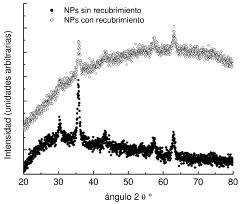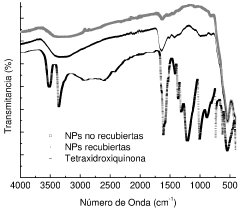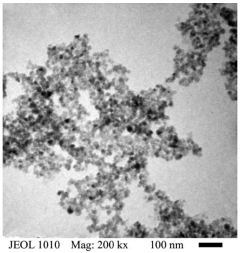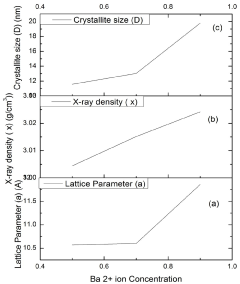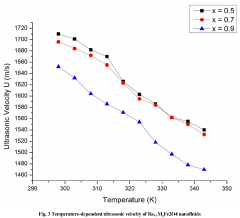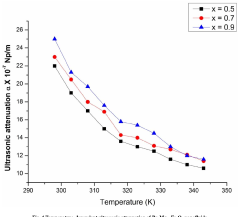How to Optimize Ferrofluid Properties for Nano-Coating Applications?
JUL 9, 20259 MIN READ
Generate Your Research Report Instantly with AI Agent
Patsnap Eureka helps you evaluate technical feasibility & market potential.
Ferrofluid Nanocoating Background and Objectives
Ferrofluids, a unique class of magnetic nanomaterials, have garnered significant attention in recent years due to their potential applications in nano-coating technologies. These colloidal suspensions of magnetic nanoparticles in a carrier fluid exhibit remarkable properties that can be manipulated by external magnetic fields, making them ideal candidates for various industrial and technological applications.
The development of ferrofluids dates back to the 1960s when NASA scientists sought to create a magnetic liquid for controlling fluids in space. Since then, the field has evolved dramatically, with researchers exploring diverse applications ranging from biomedical devices to electronic cooling systems. The current focus on nano-coating applications represents a promising frontier in ferrofluid technology, aiming to leverage their unique properties to create advanced functional surfaces.
The primary objective of optimizing ferrofluid properties for nano-coating applications is to enhance the performance, durability, and functionality of coated surfaces. This involves tailoring the magnetic, rheological, and chemical properties of ferrofluids to meet specific application requirements. Key areas of improvement include increasing the stability of ferrofluids, enhancing their response to magnetic fields, and improving their adhesion to various substrates.
One of the critical challenges in this field is achieving a balance between the magnetic properties of the nanoparticles and the overall stability of the ferrofluid. As the concentration of magnetic particles increases, so does the magnetic response of the fluid. However, this can also lead to increased particle aggregation and reduced colloidal stability. Therefore, a major goal is to develop ferrofluids with high magnetic susceptibility while maintaining long-term stability and uniform particle distribution.
Another important aspect is the optimization of the carrier fluid. The choice of carrier fluid significantly impacts the ferrofluid's viscosity, thermal properties, and compatibility with different substrates. Researchers are exploring various carrier fluids, including synthetic oils, water-based solutions, and even ionic liquids, to create ferrofluids tailored for specific nano-coating applications.
The evolution of ferrofluid technology is closely tied to advancements in nanoparticle synthesis and surface modification techniques. Recent trends include the development of multi-functional ferrofluids that combine magnetic properties with other functionalities such as optical, catalytic, or antimicrobial properties. This multifaceted approach opens up new possibilities for creating smart, responsive nano-coatings with a wide range of applications in fields like energy, healthcare, and environmental protection.
The development of ferrofluids dates back to the 1960s when NASA scientists sought to create a magnetic liquid for controlling fluids in space. Since then, the field has evolved dramatically, with researchers exploring diverse applications ranging from biomedical devices to electronic cooling systems. The current focus on nano-coating applications represents a promising frontier in ferrofluid technology, aiming to leverage their unique properties to create advanced functional surfaces.
The primary objective of optimizing ferrofluid properties for nano-coating applications is to enhance the performance, durability, and functionality of coated surfaces. This involves tailoring the magnetic, rheological, and chemical properties of ferrofluids to meet specific application requirements. Key areas of improvement include increasing the stability of ferrofluids, enhancing their response to magnetic fields, and improving their adhesion to various substrates.
One of the critical challenges in this field is achieving a balance between the magnetic properties of the nanoparticles and the overall stability of the ferrofluid. As the concentration of magnetic particles increases, so does the magnetic response of the fluid. However, this can also lead to increased particle aggregation and reduced colloidal stability. Therefore, a major goal is to develop ferrofluids with high magnetic susceptibility while maintaining long-term stability and uniform particle distribution.
Another important aspect is the optimization of the carrier fluid. The choice of carrier fluid significantly impacts the ferrofluid's viscosity, thermal properties, and compatibility with different substrates. Researchers are exploring various carrier fluids, including synthetic oils, water-based solutions, and even ionic liquids, to create ferrofluids tailored for specific nano-coating applications.
The evolution of ferrofluid technology is closely tied to advancements in nanoparticle synthesis and surface modification techniques. Recent trends include the development of multi-functional ferrofluids that combine magnetic properties with other functionalities such as optical, catalytic, or antimicrobial properties. This multifaceted approach opens up new possibilities for creating smart, responsive nano-coatings with a wide range of applications in fields like energy, healthcare, and environmental protection.
Market Analysis for Ferrofluid Nanocoating Applications
The ferrofluid nanocoating market is experiencing significant growth, driven by the increasing demand for advanced surface treatments across various industries. The global market for ferrofluid-based nanocoatings is projected to expand rapidly in the coming years, with applications spanning electronics, aerospace, automotive, and medical devices.
In the electronics sector, ferrofluid nanocoatings are gaining traction for their ability to enhance thermal management and electromagnetic shielding in miniaturized devices. As consumer electronics continue to shrink in size while increasing in functionality, the need for efficient heat dissipation and EMI protection becomes paramount. This trend is expected to drive substantial market growth in the electronics segment.
The aerospace industry represents another key market for ferrofluid nanocoatings. These coatings offer improved corrosion resistance, wear protection, and thermal stability for aircraft components. With the aerospace sector's focus on lightweight materials and enhanced performance, ferrofluid nanocoatings are poised to play a crucial role in next-generation aircraft design and maintenance.
In the automotive sector, ferrofluid nanocoatings are finding applications in engine components, fuel systems, and exterior surfaces. The ability of these coatings to reduce friction, improve fuel efficiency, and provide superior protection against harsh environmental conditions is driving their adoption in high-performance vehicles and electric cars.
The medical device industry is also showing increased interest in ferrofluid nanocoatings. These coatings can enhance the biocompatibility of implants, improve the performance of diagnostic equipment, and provide antimicrobial properties for medical instruments. As healthcare technology advances, the demand for specialized coatings in this sector is expected to grow significantly.
Geographically, North America and Europe currently lead the ferrofluid nanocoating market, owing to their strong presence in high-tech industries and substantial R&D investments. However, the Asia-Pacific region is anticipated to witness the fastest growth, driven by rapid industrialization, increasing automotive production, and growing electronics manufacturing sectors in countries like China, Japan, and South Korea.
Key market challenges include the high cost of ferrofluid materials and the need for specialized application techniques. However, ongoing research into cost-effective production methods and improved application technologies is expected to address these barriers, further expanding market opportunities.
In the electronics sector, ferrofluid nanocoatings are gaining traction for their ability to enhance thermal management and electromagnetic shielding in miniaturized devices. As consumer electronics continue to shrink in size while increasing in functionality, the need for efficient heat dissipation and EMI protection becomes paramount. This trend is expected to drive substantial market growth in the electronics segment.
The aerospace industry represents another key market for ferrofluid nanocoatings. These coatings offer improved corrosion resistance, wear protection, and thermal stability for aircraft components. With the aerospace sector's focus on lightweight materials and enhanced performance, ferrofluid nanocoatings are poised to play a crucial role in next-generation aircraft design and maintenance.
In the automotive sector, ferrofluid nanocoatings are finding applications in engine components, fuel systems, and exterior surfaces. The ability of these coatings to reduce friction, improve fuel efficiency, and provide superior protection against harsh environmental conditions is driving their adoption in high-performance vehicles and electric cars.
The medical device industry is also showing increased interest in ferrofluid nanocoatings. These coatings can enhance the biocompatibility of implants, improve the performance of diagnostic equipment, and provide antimicrobial properties for medical instruments. As healthcare technology advances, the demand for specialized coatings in this sector is expected to grow significantly.
Geographically, North America and Europe currently lead the ferrofluid nanocoating market, owing to their strong presence in high-tech industries and substantial R&D investments. However, the Asia-Pacific region is anticipated to witness the fastest growth, driven by rapid industrialization, increasing automotive production, and growing electronics manufacturing sectors in countries like China, Japan, and South Korea.
Key market challenges include the high cost of ferrofluid materials and the need for specialized application techniques. However, ongoing research into cost-effective production methods and improved application technologies is expected to address these barriers, further expanding market opportunities.
Current Challenges in Ferrofluid Optimization
The optimization of ferrofluid properties for nano-coating applications faces several significant challenges. One of the primary obstacles is achieving the right balance between magnetic responsiveness and stability. Ferrofluids must maintain their magnetic properties while remaining stable in various environmental conditions, which is particularly crucial for nano-coating applications where thin, uniform layers are essential.
Another major challenge lies in controlling the particle size distribution of magnetic nanoparticles within the ferrofluid. Achieving a narrow size distribution is critical for ensuring consistent performance across the nano-coating. However, preventing agglomeration and maintaining colloidal stability over extended periods remains a persistent issue, especially when exposed to strong magnetic fields or varying temperatures.
The surfactant used to stabilize the magnetic nanoparticles presents its own set of challenges. Finding a surfactant that effectively prevents particle aggregation while not interfering with the desired properties of the nano-coating is a delicate balance. Moreover, the surfactant must be compatible with the carrier fluid and the intended application environment, which can vary widely depending on the specific use case.
Viscosity control is another critical factor in ferrofluid optimization for nano-coating applications. The fluid must be sufficiently low in viscosity to allow for smooth application and even coverage, yet maintain enough body to prevent dripping or uneven distribution. Achieving this balance while preserving the magnetic properties and stability of the ferrofluid is a complex task.
Environmental factors such as temperature fluctuations, pH changes, and exposure to various chemicals can significantly impact ferrofluid performance in nano-coating applications. Developing ferrofluids that maintain their properties across a wide range of conditions without degradation or loss of functionality remains a significant challenge for researchers and engineers.
Scalability and cost-effectiveness present additional hurdles in the optimization process. While laboratory-scale production of high-quality ferrofluids is achievable, translating these processes to industrial-scale manufacturing while maintaining quality and keeping costs reasonable is an ongoing challenge. This is particularly important for widespread adoption of ferrofluid-based nano-coatings in various industries.
Lastly, the long-term stability and durability of ferrofluid nano-coatings pose significant challenges. Ensuring that the coating maintains its properties, including magnetic responsiveness and surface characteristics, over extended periods and under various use conditions is crucial for many applications. This requires extensive testing and optimization of both the ferrofluid composition and the coating application process.
Another major challenge lies in controlling the particle size distribution of magnetic nanoparticles within the ferrofluid. Achieving a narrow size distribution is critical for ensuring consistent performance across the nano-coating. However, preventing agglomeration and maintaining colloidal stability over extended periods remains a persistent issue, especially when exposed to strong magnetic fields or varying temperatures.
The surfactant used to stabilize the magnetic nanoparticles presents its own set of challenges. Finding a surfactant that effectively prevents particle aggregation while not interfering with the desired properties of the nano-coating is a delicate balance. Moreover, the surfactant must be compatible with the carrier fluid and the intended application environment, which can vary widely depending on the specific use case.
Viscosity control is another critical factor in ferrofluid optimization for nano-coating applications. The fluid must be sufficiently low in viscosity to allow for smooth application and even coverage, yet maintain enough body to prevent dripping or uneven distribution. Achieving this balance while preserving the magnetic properties and stability of the ferrofluid is a complex task.
Environmental factors such as temperature fluctuations, pH changes, and exposure to various chemicals can significantly impact ferrofluid performance in nano-coating applications. Developing ferrofluids that maintain their properties across a wide range of conditions without degradation or loss of functionality remains a significant challenge for researchers and engineers.
Scalability and cost-effectiveness present additional hurdles in the optimization process. While laboratory-scale production of high-quality ferrofluids is achievable, translating these processes to industrial-scale manufacturing while maintaining quality and keeping costs reasonable is an ongoing challenge. This is particularly important for widespread adoption of ferrofluid-based nano-coatings in various industries.
Lastly, the long-term stability and durability of ferrofluid nano-coatings pose significant challenges. Ensuring that the coating maintains its properties, including magnetic responsiveness and surface characteristics, over extended periods and under various use conditions is crucial for many applications. This requires extensive testing and optimization of both the ferrofluid composition and the coating application process.
Existing Ferrofluid Optimization Techniques
01 Magnetic properties of ferrofluids
Ferrofluids exhibit unique magnetic properties due to their composition of magnetic nanoparticles suspended in a carrier fluid. These properties allow them to respond to external magnetic fields while maintaining their liquid state. This characteristic makes ferrofluids useful in various applications, including seals, dampers, and heat transfer systems.- Magnetic properties of ferrofluids: Ferrofluids exhibit unique magnetic properties due to their composition of magnetic nanoparticles suspended in a carrier fluid. These properties allow ferrofluids to respond to external magnetic fields, making them useful in various applications such as seals, dampers, and sensors. The magnetic behavior of ferrofluids can be controlled and manipulated by adjusting the strength and direction of applied magnetic fields.
- Rheological characteristics of ferrofluids: Ferrofluids demonstrate complex rheological behavior that can be influenced by magnetic fields. Their viscosity and flow properties can be altered by applying external magnetic fields, allowing for dynamic control of fluid behavior. This characteristic makes ferrofluids suitable for use in adaptive damping systems, variable friction devices, and other applications where controllable fluid properties are desired.
- Thermal properties of ferrofluids: Ferrofluids possess unique thermal properties that make them valuable in heat transfer applications. They can enhance heat dissipation and thermal management in various systems, such as electronic cooling and energy conversion devices. The magnetic nanoparticles in ferrofluids contribute to improved thermal conductivity and convection, allowing for efficient heat transfer in the presence of magnetic fields.
- Optical properties of ferrofluids: Ferrofluids exhibit interesting optical properties that can be manipulated by external magnetic fields. These properties include tunable refractive indices, light scattering, and magneto-optical effects. The ability to control the optical characteristics of ferrofluids makes them suitable for applications in optical devices, displays, and sensors that rely on magnetic field-induced changes in optical properties.
- Stability and colloidal properties of ferrofluids: The stability and colloidal properties of ferrofluids are crucial for their performance and longevity. Factors such as particle size distribution, surfactant coating, and carrier fluid selection influence the long-term stability of ferrofluids. Maintaining stable colloidal suspensions is essential for preventing agglomeration and sedimentation of magnetic nanoparticles, ensuring consistent performance in various applications.
02 Rheological behavior of ferrofluids
The rheological properties of ferrofluids can be controlled by applying magnetic fields. This allows for the manipulation of their viscosity and flow characteristics, making them suitable for use in adaptive damping systems, vibration control, and precision positioning devices. The ability to change their rheological properties on demand offers unique advantages in various engineering applications.Expand Specific Solutions03 Thermal properties of ferrofluids
Ferrofluids possess distinctive thermal properties that make them valuable in heat transfer applications. Their ability to be manipulated by magnetic fields allows for enhanced heat dissipation and targeted cooling in electronic devices and other systems. The combination of their fluid nature and magnetic responsiveness enables efficient thermal management in various industrial and technological settings.Expand Specific Solutions04 Optical properties of ferrofluids
Ferrofluids exhibit unique optical properties that can be manipulated through the application of magnetic fields. These properties include tunable refractive indices and the ability to form patterns and structures when exposed to magnetic fields. Such characteristics make ferrofluids useful in optical devices, displays, and sensors.Expand Specific Solutions05 Stability and composition of ferrofluids
The stability and composition of ferrofluids are crucial factors that influence their overall properties and performance. Proper formulation and manufacturing techniques are essential to ensure long-term stability, prevent agglomeration of magnetic particles, and maintain the desired magnetic and fluid properties. Surfactants and carrier fluids play important roles in achieving stable ferrofluid compositions suitable for various applications.Expand Specific Solutions
Key Players in Ferrofluid Nanocoating Industry
The optimization of ferrofluid properties for nano-coating applications is currently in a growth phase, with increasing market size and technological advancements. The global ferrofluid market is expanding, driven by applications in various industries, including electronics and biomedical sectors. Technologically, the field is progressing rapidly, with institutions like Beijing University of Technology, CSIC, and Kent State University Foundation leading research efforts. Companies such as Hengdian Group DMEGC Magnetics and Teledyne Scientific & Imaging are actively developing commercial applications. The technology's maturity is advancing, with ongoing research focusing on enhancing stability, magnetic properties, and surface functionalization for improved nano-coating performance.
Teledyne Scientific & Imaging LLC
Technical Solution: Teledyne Scientific & Imaging LLC has developed an innovative approach to optimizing ferrofluid properties for nano-coating applications. Their method focuses on enhancing the magnetic and rheological characteristics of ferrofluids through advanced particle engineering and carrier fluid optimization. The company employs a combination of surfactant-mediated synthesis and in-situ surface modification techniques to create highly stable and responsive ferrofluid formulations[4]. These optimized ferrofluids demonstrate improved colloidal stability and reduced sedimentation, even under strong magnetic fields. Teledyne's process also incorporates the use of custom-designed carrier fluids with tailored viscosity and thermal properties, allowing for precise control over the coating thickness and uniformity in nano-scale applications[5]. Additionally, the company has developed novel characterization methods to assess the performance of their optimized ferrofluids in real-time during the coating process[6].
Strengths: Advanced particle engineering, custom carrier fluid formulations, real-time characterization capabilities. Weaknesses: Potentially complex manufacturing process, may require specialized equipment for implementation.
Midatech Ltd.
Technical Solution: Midatech Ltd. has developed a proprietary nanoparticle manufacturing technology for optimizing ferrofluid properties in nano-coating applications. Their approach involves precise control of nanoparticle size, shape, and surface chemistry to enhance the stability and performance of ferrofluids. The company utilizes a unique biocompatible gold nanoparticle platform, which allows for the creation of highly uniform and stable ferrofluid suspensions[1]. These optimized ferrofluids exhibit improved magnetic responsiveness and reduced agglomeration, making them ideal for nano-coating applications in various industries, including electronics and biomedical devices[2]. Midatech's process also incorporates advanced surface functionalization techniques to tailor the ferrofluid's properties for specific coating requirements, such as enhanced adhesion or controlled release of active compounds[3].
Strengths: Proprietary nanoparticle technology, precise control over ferrofluid properties, versatility in applications. Weaknesses: Potentially higher production costs, limited scalability for large-volume applications.
Innovative Approaches in Ferrofluid Property Enhancement
A ferrofluid of iron oxide nanoparticles covered with tetrahydroxyquinone that does not produce reactive oxygen species.
PatentPendingMX2022005740A
Innovation
- Development of a ferrofluid composed of iron oxide nanoparticles coated with tetrahydroxyquinone, with diameters less than 15 nm, providing high magnetic saturation, low cytotoxicity, and the ability to absorb energy from alternating magnetic fields without producing reactive oxygen species, enhancing tumor reduction through combined anti-keloid and magnetic hyperthermia effects.
Development of water based ferrofluid for efficient heat transfer
PatentUndeterminedIN202021015289A
Innovation
- The synthesis of Ba substituted Mg ferrite nanoparticles and their incorporation into water-based ferrofluids using ultrasonication to enhance thermal conductivity, ensuring stable single-phase formation and optimized thermoacoustical properties.
Environmental Impact of Ferrofluid Nanocoatings
The environmental impact of ferrofluid nanocoatings is a critical consideration in their development and application. These advanced materials, while offering significant technological benefits, also pose potential risks to ecosystems and human health that must be carefully evaluated and mitigated.
One of the primary environmental concerns associated with ferrofluid nanocoatings is the potential release of nanoparticles into the environment. These particles, typically composed of iron oxides, can persist in air, water, and soil, potentially affecting various organisms and ecosystems. The small size of nanoparticles allows them to penetrate biological barriers, raising concerns about bioaccumulation and long-term ecological effects.
Water pollution is a significant risk, as nanoparticles from ferrofluid coatings may leach into aquatic environments. This can lead to changes in water chemistry, affecting pH levels and nutrient availability. Aquatic organisms may ingest these particles, potentially causing toxicity or disrupting food chains. Furthermore, the magnetic properties of ferrofluid nanoparticles could interfere with the navigation systems of certain marine species.
Air quality is another area of concern, particularly during the application and removal processes of ferrofluid nanocoatings. Aerosolized nanoparticles can be inhaled, potentially causing respiratory issues in both humans and animals. The long-term effects of chronic exposure to these airborne particles are still not fully understood and require further research.
Soil contamination is also a potential issue, especially in cases where ferrofluid nanocoatings are used in outdoor applications. As the coatings degrade over time, nanoparticles may accumulate in soil, affecting its composition and potentially impacting plant growth and soil microorganisms. This could have cascading effects on terrestrial ecosystems and agricultural productivity.
The production process of ferrofluid nanocoatings also has environmental implications. The synthesis of nanoparticles and the formulation of coatings often involve energy-intensive processes and the use of potentially harmful chemicals. Minimizing energy consumption and developing greener synthesis methods are crucial steps in reducing the overall environmental footprint of these materials.
To address these environmental concerns, researchers and manufacturers are exploring various strategies. These include developing more stable and durable ferrofluid nanocoatings to reduce particle release, implementing better containment and disposal methods, and investigating biodegradable alternatives. Additionally, life cycle assessments are being conducted to comprehensively evaluate the environmental impact of ferrofluid nanocoatings from production to disposal.
Regulatory frameworks are also evolving to address the unique challenges posed by nanomaterials. Stricter guidelines for handling, application, and disposal of ferrofluid nanocoatings are being implemented to minimize environmental risks. Ongoing research into the long-term environmental fate and effects of these materials is crucial for informed policy-making and sustainable development of this technology.
One of the primary environmental concerns associated with ferrofluid nanocoatings is the potential release of nanoparticles into the environment. These particles, typically composed of iron oxides, can persist in air, water, and soil, potentially affecting various organisms and ecosystems. The small size of nanoparticles allows them to penetrate biological barriers, raising concerns about bioaccumulation and long-term ecological effects.
Water pollution is a significant risk, as nanoparticles from ferrofluid coatings may leach into aquatic environments. This can lead to changes in water chemistry, affecting pH levels and nutrient availability. Aquatic organisms may ingest these particles, potentially causing toxicity or disrupting food chains. Furthermore, the magnetic properties of ferrofluid nanoparticles could interfere with the navigation systems of certain marine species.
Air quality is another area of concern, particularly during the application and removal processes of ferrofluid nanocoatings. Aerosolized nanoparticles can be inhaled, potentially causing respiratory issues in both humans and animals. The long-term effects of chronic exposure to these airborne particles are still not fully understood and require further research.
Soil contamination is also a potential issue, especially in cases where ferrofluid nanocoatings are used in outdoor applications. As the coatings degrade over time, nanoparticles may accumulate in soil, affecting its composition and potentially impacting plant growth and soil microorganisms. This could have cascading effects on terrestrial ecosystems and agricultural productivity.
The production process of ferrofluid nanocoatings also has environmental implications. The synthesis of nanoparticles and the formulation of coatings often involve energy-intensive processes and the use of potentially harmful chemicals. Minimizing energy consumption and developing greener synthesis methods are crucial steps in reducing the overall environmental footprint of these materials.
To address these environmental concerns, researchers and manufacturers are exploring various strategies. These include developing more stable and durable ferrofluid nanocoatings to reduce particle release, implementing better containment and disposal methods, and investigating biodegradable alternatives. Additionally, life cycle assessments are being conducted to comprehensively evaluate the environmental impact of ferrofluid nanocoatings from production to disposal.
Regulatory frameworks are also evolving to address the unique challenges posed by nanomaterials. Stricter guidelines for handling, application, and disposal of ferrofluid nanocoatings are being implemented to minimize environmental risks. Ongoing research into the long-term environmental fate and effects of these materials is crucial for informed policy-making and sustainable development of this technology.
Scalability and Manufacturing Considerations
Scaling up ferrofluid production for nano-coating applications presents unique challenges that require careful consideration. The manufacturing process must be optimized to maintain consistent quality while increasing output volume. One key factor is the precise control of nanoparticle size and distribution, which directly impacts the ferrofluid's properties. Implementing advanced particle synthesis techniques, such as chemical co-precipitation or thermal decomposition, can help achieve the desired uniformity at larger scales.
Continuous flow reactors offer a promising solution for scalable ferrofluid production. These systems allow for better control over reaction conditions and can be more easily scaled up compared to batch processes. However, they require significant initial investment and expertise to operate effectively. Additionally, the use of microfluidic devices for nanoparticle synthesis shows potential for high-throughput production with excellent size control.
Quality control becomes increasingly critical as production scales up. Implementing real-time monitoring systems and advanced characterization techniques, such as dynamic light scattering and magnetometry, can help ensure consistent ferrofluid properties throughout the manufacturing process. Automated sampling and analysis systems can be integrated into the production line to maintain tight quality control without sacrificing throughput.
The choice of surfactants and carrier fluids also plays a crucial role in scalability. Developing formulations that remain stable during large-scale production and storage is essential. This may involve exploring novel surfactant combinations or engineered stabilizers that can withstand the stresses of industrial-scale mixing and handling.
Environmental and safety considerations must be addressed as production volumes increase. Implementing closed-loop systems for solvent recovery and recycling can minimize waste and reduce environmental impact. Additionally, designing processes that use less toxic or more environmentally friendly chemicals can improve overall sustainability and worker safety.
Lastly, the integration of Industry 4.0 technologies, such as IoT sensors and AI-driven process optimization, can significantly enhance manufacturing efficiency and product consistency. These technologies enable real-time adjustments to process parameters based on continuous data analysis, ensuring optimal ferrofluid properties even as production scales up.
Continuous flow reactors offer a promising solution for scalable ferrofluid production. These systems allow for better control over reaction conditions and can be more easily scaled up compared to batch processes. However, they require significant initial investment and expertise to operate effectively. Additionally, the use of microfluidic devices for nanoparticle synthesis shows potential for high-throughput production with excellent size control.
Quality control becomes increasingly critical as production scales up. Implementing real-time monitoring systems and advanced characterization techniques, such as dynamic light scattering and magnetometry, can help ensure consistent ferrofluid properties throughout the manufacturing process. Automated sampling and analysis systems can be integrated into the production line to maintain tight quality control without sacrificing throughput.
The choice of surfactants and carrier fluids also plays a crucial role in scalability. Developing formulations that remain stable during large-scale production and storage is essential. This may involve exploring novel surfactant combinations or engineered stabilizers that can withstand the stresses of industrial-scale mixing and handling.
Environmental and safety considerations must be addressed as production volumes increase. Implementing closed-loop systems for solvent recovery and recycling can minimize waste and reduce environmental impact. Additionally, designing processes that use less toxic or more environmentally friendly chemicals can improve overall sustainability and worker safety.
Lastly, the integration of Industry 4.0 technologies, such as IoT sensors and AI-driven process optimization, can significantly enhance manufacturing efficiency and product consistency. These technologies enable real-time adjustments to process parameters based on continuous data analysis, ensuring optimal ferrofluid properties even as production scales up.
Unlock deeper insights with Patsnap Eureka Quick Research — get a full tech report to explore trends and direct your research. Try now!
Generate Your Research Report Instantly with AI Agent
Supercharge your innovation with Patsnap Eureka AI Agent Platform!
